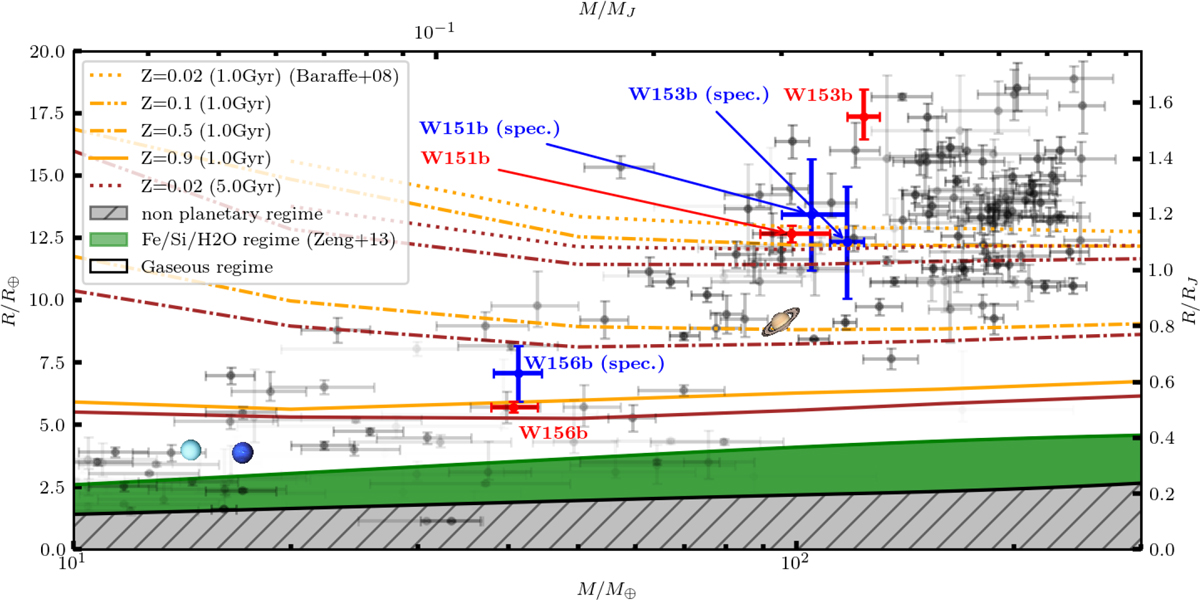Fig. 9

WASP-151b, WASP-153b and WASP-156b in the mass-radius diagram. The black points with 1σ error bars are the known confirmed planets according to exoplanet.eu (Schneider et al. 2011). Their transparency reflect the relative precision on their mass and radius. The better the parameter of a planet are constrained the more opaque the point is. The red and blue points with 1σ errors barsare the planets announced by this paper. For the red points the mass and radius estimates rely on stellar parameters obtained via evolutionary tracks and the stellar density inferred from the transit (see Sect. 3.2.2), while for the blue points, they rely on purely spectroscopic stellar parameters (see Sect. 3.1). The solar system planets (Saturn, Uranus and Neptune) have also been reported in this diagram for reference. The two shaded areas at the bottom of the graph define the non-planetary regime (gray striped) and the rocky-water world regime (green) as defined by Zeng & Sasselov (2013). Consequently the rest of the diagram represents the gaseous-ice giant regime. The solid, dotted and dashed lines represent the mass-radius relations for gaseous planets of different age and different heavy element mass fraction (Z) as described by (Baraffe et al. 2008). The type of line (solid, dashed, or dotted) represents the heavy element mass fraction and the color of the line represents the age. These models have been used to constrain the nature and composition of WASP-151b, WASP-153b and WASP-156b, see Sects. 4.1 and 4.2.
Current usage metrics show cumulative count of Article Views (full-text article views including HTML views, PDF and ePub downloads, according to the available data) and Abstracts Views on Vision4Press platform.
Data correspond to usage on the plateform after 2015. The current usage metrics is available 48-96 hours after online publication and is updated daily on week days.
Initial download of the metrics may take a while.


